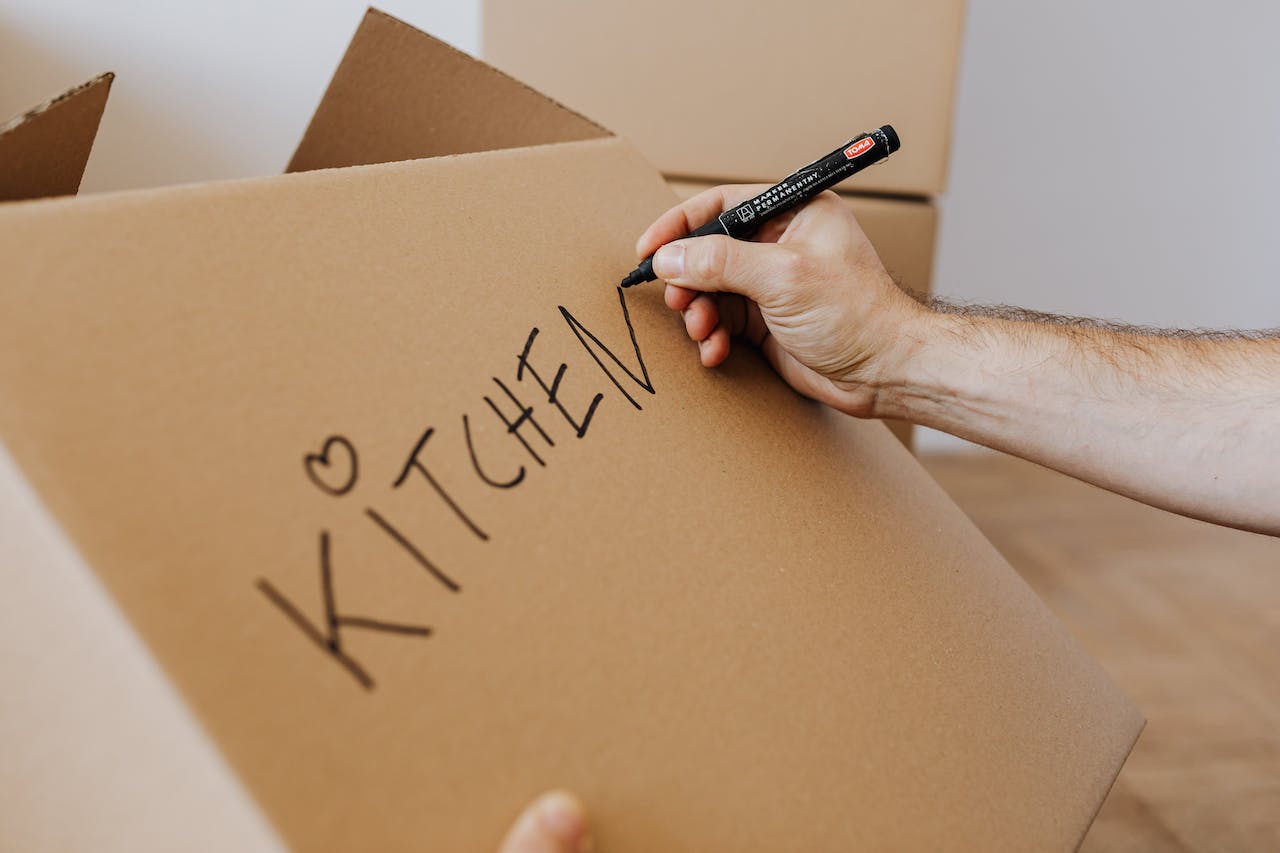November 30, 2023
Pack Your Kitchen Like A Pro

When moving into a new house or apartment, one area that most people put off packing until the last minute is the kitchen.
We get it! Packing a kitchen is difficult as it involves dealing with numerous fragile and oddly-shaped items, such as:
- Dishes
- Glasses
- Bowls
- Appliances
These items require proper packing to ensure they don’t get damaged or destroyed during the move.
Additionally, the kitchen is usually the most cluttered room in the house, with lots of drawers, cupboards, and shelves to sort through. This can make it time-consuming and overwhelming to pack everything properly.
And let’s not forget moving perishable items. Food and liquids often require special attention and care during transportation to avoid spills and spoilage.
Conclusion
All of these factors make packing a kitchen a daunting task, but with the right approach and some careful planning, it can be done successfully.
How to Pack a Kitchen for Moving
If you’re too busy to think about how to pack your kitchen items or other belongings while relocating, you can always hire professionals to handle it. However, if you prefer DIY, we have some helpful tips on how to pack kitchen items that will safeguard your dishware and equipment during the move.
Let’s start with the most fragile items on your packing list.
Crystal and Fine China
When packing these items, remember to wrap each piece individually.
- Begin with a layer of plain packing paper either in sheets or rolls.
- On top of the first layer, add a second layer of either newspaper, bubble wrap, or foam to ensure that it’s securely wrapped.
Pro Tip #1
Avoid using newspaper as the first layer, as it may leave behind ink or newsprint that must be thoroughly washed off before using your china.
- To prevent damage, avoid stacking plates on top of one another.
- Instead, stand pre-wrapped plates on edge in the box with a thick layer of padding on the bottom.
For stemware and glassware, using pre-sectioned boxes is a great option.
- Simply wrap each piece in plain paper
- Place it in its own compartment for maximum protection.
- Before loading the box, make sure to add a layer of padding to the bottom, such as kitchen towels.
Pro Tip #2
Invest in kitchen moving boxes. These boxes are typically sturdy and come with compartments or dividers to keep your dishes safe during transport. You can also find boxes that are specifically designed for glassware, which often come with individual sleeves to prevent items from touching one another and potentially breaking.
Next, let’s talk about items “not-so” fragile but equally awkward to pack.
Pots, Pans, Skillets, Etc.
Be sure to stack pots and pans according to their size, while wrapping each pot individually to prevent scratches.
- Add foam paper or bubble wrap in-between each pan
- Fill any extra space around the pots with crumpled paper to create a snug fit.
For those odd-shaped items such as pitchers, serving bowls, gravy boats, punch bowls, and pieces that cannot be nested or stacked, wrap them individually.
- Pack these items in separate boxes to avoid damage during the move.
- When packing silverware, cover each piece with plastic wrap.
- For cutlery, you can use cardboard or knife shields to cover the blades’ sharp edges.
- Complete the packaging with plastic wrap and a thick layer of newspaper.
Small Appliances
Some appliances include sharp blades such as blenders and food processors.
- Remove the blades and use the same method for packaging them as cutlery.
- Each base or motor should be wrapped in bubble wrap to prevent damage.
- Place multiple bases in one box but be sure to use extra padding in between each item.
Pro Tip
Be careful not to over-pack the box. Too much weight will make it harder to lift and transport.
Best Kitchen Moving Hacks
Below we’ve compiled a list of do’s and don’ts for how to pack kitchen items that can simplify your next move!
Do’s
- Round up more boxes than you think you need. Even if your kitchen is relatively small, you’ll likely need extra boxes.
- Use small-to-medium size boxes to prevent overfilling.
- Pack the items you use least first and leave the items you use the most for last.
Don’ts
- Don’t pack items in your pantry you won’t use. Check expiration dates. If they are expired, get rid of them. If they are still good, drop them off at your local food shelter.
- Don’t put perishables in a box. If you’re moving a short distance, use a cooler to pack perishable items from the fridge. Again, check expiration dates and get rid of anything that’s expired.
- Don’t pack something you never use! If you have a bundt cake pan that has never seen the inside of your oven, donate it or give it to a friend. Do you have small appliances you don’t need? You can probably get a few bucks for them by listing them for sale.
Need Help Moving in St. Paul or Minneapolis, MN?
If you need help with packing, moving, or both, Good Stuff Moving is here to assist you with affordable and reliable services that fit your budget, needs, and schedule.
Our experienced team understands that each move is unique and requires personalized attention. That’s why we offer a range of services, including:
- Packing
- Loading
- Unloading
- Unpacking
To get started, simply request a free quote or give us a call. Our team will work closely with you to create a customized moving plan.
We only use high-quality packing materials and equipment to ensure the safe transportation of your belongings locally and across the country!
At Good Stuff Moving, we take pride in our commitment to providing exceptional customer service. Our goal is to make your move as stress-free as possible, so you can focus on settling into your new home.
Contact us today for a free quote and let us help you with your next move!



